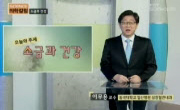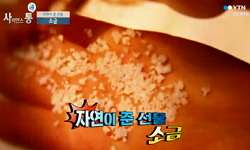This study aims to examine the relationships between geum (a kind of Korean zither, (金)) and kkwaenggwari (a kind of Korean small gong) and explain historical characteristics of kkwaenggwari, and it also carries significance in clarifying relations ...
http://chineseinput.net/에서 pinyin(병음)방식으로 중국어를 변환할 수 있습니다.
변환된 중국어를 복사하여 사용하시면 됩니다.
- 中文 을 입력하시려면 zhongwen을 입력하시고 space를누르시면됩니다.
- 北京 을 입력하시려면 beijing을 입력하시고 space를 누르시면 됩니다.
부가정보
다국어 초록 (Multilingual Abstract)

This study aims to examine the relationships between geum (a kind of Korean zither, (金)) and kkwaenggwari (a kind of Korean small gong) and explain historical characteristics of kkwaenggwari, and it also carries significance in clarifying relations with chwita (military camp music instruments) in terms of organization of traditional Korean musical instruments. Geum was used in various court ceremonies and Buddhist services. Geum used in a royal court is classified by usage: family customary formalities, ancestral ritual formalities and military honors. It is also divided into two by size; dae-geum and so-geum. So-geum (or small geum) is also classified by shape into small geum for family customary formalities and so-geum for ancestral ritual formalities. Kkwaenggwari used in Buddhist services is similar to so-geum for royal ancestral rites music, and it is also considered to resemble so-geum for royal ancestral rites music in terms of name, shape, size, material and performance techniques of musical instrument. Kkwaenggwari is generally known to be related to so-geum, but as performance tradition of Garye Nobu was cut off, it was difficult to discuss transmission of so-geum for customary formalities of a family, and geum was replaced with jeong (鉦) or jaeng (錚). There are similarities between so-geum for royal ancestral rites music and kkwaenggwari in terms of shape of musical instrument, but it was hard to find the link transmitted to kkwaenggwari used by ordinary people. However, kkwaenggwari used in Buddhist services, a similar musical instrument to so-geum for royal ancestral rites music, was considered to be more closely related to the transmission of kkwaenggwari as it was used by the Gutjungpae. The Gutjungpae was a private artist organization related to Buddhism, and it was the only private artist group where kkwaenggwari was used in Buddhist services that was similar to kkwaenggwari was played. As artists belonging to the lowest class of people joined the Soggogun in late Joseon Dynasty, chwita played in military camps was passed down to ordinary people, and as Gutjungpae that played kkwaenggwari used in Buddhist services accepted chwita such as a small jing and a 13-stringed musical instrument played in military camps that was similar to kkwaenggwari used in Buddhist services, kkwaenggwari used in Buddhist services, a musical instrument with a handle, was transformed into a kkwaenggwari without a handle. A small jing or a small jeang is the same as small geum in terms of its size and shape, material and performance techniques, and it is also identical to the small geum for royal ancestral rites music except for a handle and kkwaenggwari used in Buddhist services. Accordingly, so-geum for royal ancestral rites music, so-geum for family customary formalities, so-jeong and so-jaeng in military camps, and gwang-soi used in Buddhist services are considered as identical in terms of characteristics. The performance tradition of geum continued through so-jeong and so-jaeng, and the Gutjungpae transformed gwang-soi into a musical instrument without a handle such as so-jeong and so-jaeng and developing it into kkwaenggwari that a player could play in a free style, and it was expanded into nongak (traditional Korean music performed by farmers) and shamanistic music.
참고문헌 (Reference)
1 최종민, "황해도 철물이굿의 음악적 연구" 동덕여자대학교 207-225, 1980
2 김정헌, "호남좌도농악 연구" 전북대학교 대학원 2008
3 신명숙, "한국의 꽹과리와 춤 연구Ⅰ-한중 소금(小金) 문헌 비교-" 비교민속학회 (38) : 387-411, 2009
4 장사훈, "한국악기대관" 서울대학교출판부 1994
5 이보형, "한국민속의 세계" 고려대학교 민족문화연구회 2001
6 김영운, "한국 토속악기의 악기론적 연구" 한국국악학회 17 : 31-77, 1990
7 이두원, "한국 연극사(신수판)" 학연사 2000
8 장석규, "팔도도원수 장만장군" 도서출판 기창 2009
9 송지원, "종묘제례악" 민속원 2008
10 윤광봉, "조선후기의 연희" 박이정 1998
1 최종민, "황해도 철물이굿의 음악적 연구" 동덕여자대학교 207-225, 1980
2 김정헌, "호남좌도농악 연구" 전북대학교 대학원 2008
3 신명숙, "한국의 꽹과리와 춤 연구Ⅰ-한중 소금(小金) 문헌 비교-" 비교민속학회 (38) : 387-411, 2009
4 장사훈, "한국악기대관" 서울대학교출판부 1994
5 이보형, "한국민속의 세계" 고려대학교 민족문화연구회 2001
6 김영운, "한국 토속악기의 악기론적 연구" 한국국악학회 17 : 31-77, 1990
7 이두원, "한국 연극사(신수판)" 학연사 2000
8 장석규, "팔도도원수 장만장군" 도서출판 기창 2009
9 송지원, "종묘제례악" 민속원 2008
10 윤광봉, "조선후기의 연희" 박이정 1998
11 이숙희, "조선후기 지방 군영 취타악대 연구" 한국국악학회 40 : 237-280, 2006
12 이숙희, "조선후기 군영악대-취고수 세악수 내취" 태학사 2007
13 이보형, "조선후기 공연집단과 음악문화" 1995
14 국립국악원, "조선시대음악풍속도Ⅱ" 국립국악원 2004
15 이보형, "조선말기 사찰 밖의 불교음악 개관" 한국전통음악학회 6 : 491-513, 2005
16 이경진, "조선 시대 불교계 연희집단과 유랑연희패의 관계 양상" 반교어문학회 (35) : 225-248, 2013
17 이종덕., "전라북도 무형문화재 43호 방짜 유기장"
18 이숙희, "작법무의 변천과 조선후기 군영취타악과의 관계-감로탱을 중심으로" 한국전통음악학회 6 : 531-555, 2005
19 주강현, "우리문화의 수수께끼2" 한겨레신문사 2002
20 차상찬, "어린이" 개벽사 1930
21 이혜구, "신역악학궤범" 국립국악원 2000
22 노수환, "상쇠" 학민사 2008
23 태우스님, "부은사(경남 밀양시 삼랑진읍 안태리)"
24 박진태, "농악대 잡색놀이의 연극성과 제의성" 민속학회 29 : 459-484, 1997
25 성윤선, "농악과 조선시대 군제와의 관계성" 동덕여자대학교 대학원 2010
26 이숙희, "농악 악기편성 성립의 배경과 시기에 관한 연구-군영 취타악기와의 관련성을 중심으로-" 한국국악학회 54 : 301-337, 2013
27 김금화, "김금화의 무가집" 문음사 1995
28 국립국악원, "국악용어통일안Ⅱ" 국립국악원 1994
29 "국립국어원 홈페이지"
30 조은희, "개항장의 풍속화가 기산 김준근 연구" 성균관대학교 대학원 2010
31 김선풍, "강릉단오제 연구" 보고사 1998
32 강우방, "감로탱" 예경 1995
33 강우방, "감로탱" 도서출판 예경 1995
34 "英祖貞純王后嘉禮都監儀軌"
35 "睿宗實錄"
36 "樂學軌範"
37 함화진, "朝鮮樂槪要" 이왕직아악대 1917
38 "春官通考"
39 "成宗實錄"
40 "慵齋叢話"
41 한국문화예술진흥원, "巫樂" 한국문화예술진흥원 1980
42 "宗廟儀軌"
43 "國朝五禮儀"
44 "世宗實錄"
45 辛基秀仲尾宏, "(大系)朝鮮通信使" 明石書店 1995
동일학술지(권/호) 다른 논문
-
- 세계음악학회
- 김희선 ( Hee Sun Kim )
- 2014
- KCI등재
-
<8명의 주자를 위한 옥타곤>(Octagon for 8 Players)을 통하여 본 강석희의 고유한 작품세계와 비대칭성
- 세계음악학회
- 강은수 ( Un Su Kang )
- 2014
- KCI등재
-
- 세계음악학회
- 김묘신 ( Myo Sin Kim )
- 2014
- KCI등재
-
조용필, 알란 탐, 다니무라 신지의 Pax Musica: 음악으로 동아시아에 평화를
- 세계음악학회
- 이경분 ( Kyung Boon Lee )
- 2014
- KCI등재
분석정보
인용정보 인용지수 설명보기
학술지 이력
| 연월일 | 이력구분 | 이력상세 | 등재구분 |
|---|---|---|---|
| 2024 | 평가예정 | 재인증평가 신청대상 (재인증) | |
| 2021-01-01 | 평가 | 등재학술지 선정 (계속평가) |  |
| 2020-12-01 | 평가 | 등재후보로 하락 (재인증) |  |
| 2017-01-01 | 평가 | 등재학술지 유지 (계속평가) |  |
| 2013-01-01 | 평가 | 등재학술지 유지 (등재유지) |  |
| 2010-01-01 | 평가 | 등재학술지 유지 (등재유지) |  |
| 2008-01-01 | 평가 | 등재학술지 유지 (등재유지) |  |
| 2005-01-01 | 평가 | 등재학술지 선정 (등재후보2차) |  |
| 2004-01-01 | 평가 | 등재후보 1차 PASS (등재후보1차) |  |
| 2002-01-01 | 평가 | 등재후보학술지 선정 (신규평가) |  |
학술지 인용정보
| 기준연도 | WOS-KCI 통합IF(2년) | KCIF(2년) | KCIF(3년) |
|---|---|---|---|
| 2016 | 0.21 | 0.21 | 0.26 |
| KCIF(4년) | KCIF(5년) | 중심성지수(3년) | 즉시성지수 |
| 0.19 | 0.23 | 0.502 | 0.14 |




 KCI
KCI KISS
KISS




